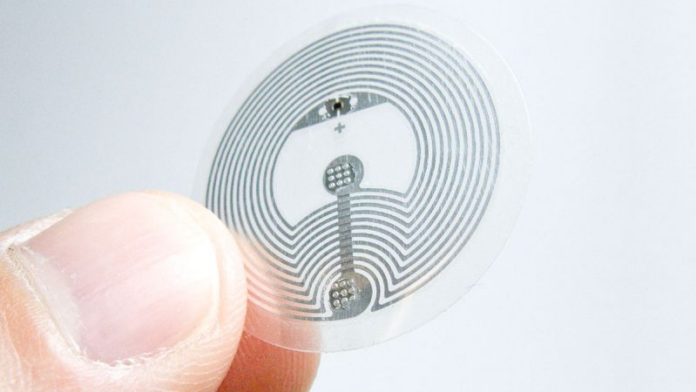“We have noticed a substantial increase from brands, businesses and start-ups interested in using NFC in clothing and accessories. Brands big and small are wanting to create smart wearable clothing. Some of the main use cases are identification, authentication, marketing and product information and traceability. There are two types of NFC tag, standard and authentication. Standard NFC tags just allows you to store a weblink and lock the tag. These tags can be copied to other tags with a mobile phone however, if you’re using these for marketing, re-ordering information or more information about the product, this shouldn’t be an issue. Authentication NFC tags cannot be copied, they create a new code on every scan that is then verified using a third party server. These tags are used to ensure the product you are buying is genuine or to be able to trace who has previously owned the item.
NFC tags can help to trace a products journey and their lifecycle. There are companies that rent designer handbags to customers for occasions which is cheaper than buying one just to be used once. Authentication NFC tags can be hidden within these handbags to ensure that the correct handbag is returned.
There are a few types of NFC tags that can be used in garments. Button Laundry tags can be sewn directly onto clothing or other garments. They are very durable and can be reused.
Seritag also stock a range of Disc tags in different sizes and materials. These can be attached to garments, shoes, handbags and other fashion items within a pocket and can be easily removed from the attached product and reused into the next one.
Another option is Garment Spec labels which are a strengthened version of 29mm clear NTAG213 label. They can withstand flexing and domestic wash and dry cycles and have a lifespan of around 10 years. We encourage customers to place garment labels behind sew on patches so they can be easily detached at the end of the products lifecycle.
Iron-on garment spec labels can also be used within garment products. We recommend testing these tags to make sure these work with your products. These can be peeled off the product in order for the product to be recycled. All of our products can be made with the authentication NTAG424 chip.
One company leading the way is Thousand Fell. They have created fully recyclable vegan shoes from natural materials including aloe vera, coconut husk and palm leaf fibres. These shoes create zero waste making Thousand Fell a closed loop system. Currently, 97% of shoes end up in landfill which is clearly not sustainable. Thousand Fell use NFC for marketing purposes, linking customers to their SuperCircle page to show people how to recycle items and earn credits.” (Seritag 2023)
I think the implementation of NFC tags in clothing is interesting. The article mentions handbag rental verification, additionally, it would be interesting to see clothing rental sites adopt NFCs, allowing customers to see how many times garments have been rented and where they’ve been rented.
While I can’t say I anticipate a widespread adoption of NFCs in garments, consumers are showing increased interest in brand transparency. The only brands that would be adopting the technology are brands that are confident in showcasing their zero-waste, recycling, or circular systems, which there aren’t too many to begin with. I could see a future where with enough bigger name brands taking transparency as far as the implementation of NFC tags, more brands could be incentivized to begin pursuing zero-waste or circular business models in order to maintain consumer interest/favor, therefore creating more standardization for environmentally conscious business practice in the fashion industry.
I’m skeptical of the environmental impact of NFCs, it seems with any new technology that promises to be a sustainable alternative, there is some sort of trade off. I can’t find much of anything on the negative environmental impacts of NFCs. They are made of metals like copper that are typically harvested through exploitive means
While this article focuses more on the fashion industry, NFCs could hypothetically be used on any product. Could NFCs be incorporated into ODNRs recycling systems to inform visitors on where their trash ends up? Or perhaps NFCs could somehow be incorporated into ODNR’s bucket program in order to increase bucket return rate?
How can NFC help grow the Circular Economy ? (2023, May 10). Seritag. https://seritag.com/learn/using-nfc/nfc-help-grow-circular-economy




